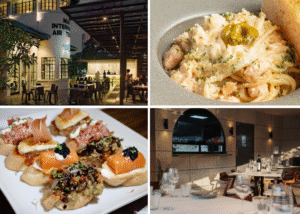Integrating POS with Online Ordering Systems: What Singapore Restaurants Need to Know
In Singapore’s highly competitive and fast-evolving food and beverage (F&B) market, the ability to manage online orders effectively is crucial. The rise of food delivery platforms like GrabFood, Foodpanda, and others has transformed how restaurants operate — making POS integration with online ordering systems more important than ever.
Seamless integration ensures that orders from multiple aggregators flow directly into your restaurant’s Point of Sale (POS) system, creating operational efficiencies, reducing errors, and improving customer satisfaction. This article explores the critical benefits and technical features Singapore restaurants must consider when choosing the best POS integration for online orders.
Why POS Integration is Crucial for Singapore Restaurants
Singapore restaurants often partner with multiple delivery aggregators to maximize their reach. However, managing orders from GrabFood, Foodpanda, Deliveroo, and others can be operationally challenging without effective integration.
Without POS integration, orders come through different platforms with separate systems and processes, leading to:
- Manual entry errors
- Order mix-ups and delays
- Inventory discrepancies
- Increased cancellations and refunds
Integrating your POS with online ordering systems automates order flow directly into your backend, consolidating order information to streamline kitchen operations and unify reporting. For multi-aggregator environments common in Singapore, this integration reduces the complexity of juggling multiple channels and helps maintain a smooth workflow.
Key Features of the Best POS Integration for Online Orders
Selecting the best POS integration involves understanding the technical capabilities that support operational efficiency and accuracy.
Real-time Inventory Synchronization
A powerful feature is real-time inventory sync between the POS and all online ordering platforms. It updates menu availability instantly as sales occur across delivery apps, preventing customers from ordering sold-out items.
Benefits include:
- Fewer order cancellations due to stock outs
- Accurate stock tracking and forecasting
- Improved supplier ordering based on real-time data
Kitchen Display System (KDS) Integration
KDS integration connects your POS with a digital kitchen display system, replacing traditional paper tickets. This transformation streamlines order preparation by displaying orders clearly and promptly to kitchen staff.
Key advantages:
- Faster order turnaround times
- Reduced human errors from misread tickets
- Better communication between front-of-house and kitchen
Robust Order Management System (OMS) Compatibility
An integrated OMS works alongside your POS to manage multi-channel orders efficiently. It consolidates orders from various platforms, prioritizes them, and monitors their status from preparation to delivery.
Effective OMS compatibility ensures:
- Smooth handling of simultaneous orders
- Accurate tracking and order updates in real-time
- Analytics for staff workload and order trends
Top POS Providers and Solutions in Singapore for Online Order Integration
Singapore’s market has several reputable POS providers offering strong integration with popular delivery aggregators.
Integration with GrabFood and Foodpanda
Leading POS providers such as klikit, VendHQ, Lightspeed, and Toast POS support direct integration with GrabFood and Foodpanda. These platforms use API connections or middleware solutions to sync orders instantly to the POS.
This ensures:
- Orders from delivery apps automatically entered into POS
- Triggered inventory updates
- Unified sales data for accounting
Local Success Stories and Use Cases
Restaurants in Singapore using klikit’s POS integration have reported:
- 30% reduction in order errors
- Faster kitchen processing times
- Enhanced control over multi-aggregator orders, leading to higher customer satisfaction
One hawker center chain integrated Klikit’s POS with multiple delivery platforms, achieving seamless order coordination and real-time inventory tracking that minimized waste and avoided over-ordering.
Operational Benefits: Reducing Cancellations and Delivery Chaos
Integrating POS with online ordering systems smooths operations by reducing manual processes and errors. Restaurants benefit from:
- Fewer cancellations due to unavailable menu items or incorrect orders
- Streamlined staff workflows with clearer order communication
- Real-time reporting enabling quick decision-making during peak times
This leads to more consistent order fulfilment, improved delivery accuracy, and happier customers, essential for growth in Singapore’s delivery-centric market.
How to Choose the Right POS Integration for Your Restaurant
When selecting a POS integration, consider these actionable tips:
- Technical Features: Ensure real-time inventory sync, KDS compatibility, and OMS support.
- Scalability: Choose a system that scales with your business as order volume increases.
- Aggregator Compatibility: Verify that the POS integrates seamlessly with key platforms like GrabFood and Foodpanda.
- Ease of Use: User-friendly interfaces minimize training time.
- Reliable Support: 24/7 technical support and local presence in Singapore matter.
- Cost-effectiveness: Evaluate pricing models and ROI.
Engage with vendors offering demos to assess if their ecosystem fits your operational needs.
Future Trends: The Evolution of POS and Online Ordering Systems in Singapore
Looking ahead, POS and online ordering integration in Singapore is set to evolve with innovations including:
- AI-driven order management for predictive demand and optimized kitchen workflows.
- Unified commerce platforms combining in-store, online, and delivery orders into one seamless system.
- Enhanced analytics providing deeper business insights.
Staying ahead with technology adoption will help Singapore restaurants stay competitive in the dynamic F&B landscape.
Frequently Asked Questions
What is the best POS integration for handling orders from multiple delivery aggregators?
The best POS integration for multiple delivery aggregators includes real-time inventory synchronization, seamless order management system (OMS) compatibility, and direct API connections to platforms like GrabFood and Foodpanda. These features reduce manual errors and sync all orders into a central system for efficient processing.
How does KDS integration benefit restaurant operations in Singapore?
KDS (Kitchen Display System) integration improves kitchen efficiency by displaying orders digitally as they come in, reducing manual errors from paper tickets, speeding up order preparation, and facilitating better communication between front-of-house and kitchen staff. This results in faster turnaround times and greater order accuracy.
Can integrating my POS with an OMS reduce order cancellations?
Yes, integrating your POS with a robust OMS reduces cancellations by ensuring accurate, real-time order updates across all delivery platforms. This synchronization prevents accepting orders for unavailable items or overbooking, improving inventory management and staff coordination.
Which POS providers are best suited for Singapore’s food delivery ecosystem?
Popular POS providers in Singapore that support food delivery integration include klikit, VendHQ, Lightspeed, and Toast POS. They offer strong integration capabilities with major delivery platforms like GrabFood and Foodpanda, enabling seamless order flow and reliable inventory management.



